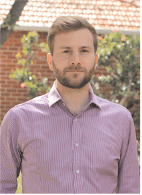Visualisation and delineation techniques adopted from other industries to increase productivity of the G&G work in the oil and gas industry
Adrien Bisset A and Christopher Han AFoster Findlay Associates Pty Ltd.
The APPEA Journal 55(2) 475-475 https://doi.org/10.1071/AJ14110
Published: 2015
Abstract
Given the recent increase of seismic data quality owing to improvements in seismic acquisition and processing, it is surprising to realise that the oil and gas industry is still using standard desktop screens with 256 colour resolution software displays, and for most of the seismic representations, using only three types of colour bars (peak-trough, grey scale or rainbow) for human interpretation, comprehension and decision-making processes.
Knowing that these displays show 0.000006% of the details captured in 32-bit resolution data, it is a wonder: is the oil and gas industry using the available data to its maximum potential to decrease the risk of drilling dry wells?
Astronomy and medical imaging tackled these issues long ago and inspired by them, the oil and gas industry is able to use a 24-bit colour space for representing seismic data in a more appealing way. These innovative seismic data representations are called colour blends and are created using sources such as frequency decomposition products, angle stacks, edge attributes, 4D vintages or any other seismic attributes colour-coded with primary colours.
Colour blends have not yet become mainstream due to availability of the tools. The cognitive cybernetics approach allows a more balanced input between data-driven processes, interpreter skills and guidance, and has recently been made available for use with colour blends—a breakthrough in interpretation.
This extended abstract shows recent advances in these two techniques and how they benefit to the geological and geophysical work based on a case study from the Australian and New Zealand sector.

Adrien Bisset is a regional manager for Foster Findlay Associates Pty Ltd (ffA) in Australia and New Zealand. With more than eight years’ experience in international roles in the industry, Adrien joined ffA in 2011 and undertaking a range of business development activities in Scandinavia and Europe, and he now runs the company’s business development activities in Perth. He is responsible for developing the ffA business in Australia and New Zealand. Adrien has a strong geoscience background with a master’s degree from the University of Paris. He has experience in marketing, graphics from previous roles in the industry, planetology and earth science from his role at the Mars Institute, which gave him a wider view on how different scientific fields benefit from interacting with each other. |

Chris Han has a BSc in geological sciences and an MSc in structural geology with geophysics from the University of Leeds. He started his career working in site survey geophysics for Fugro; this involved offshore data acquisition, processing and interpretation primarily for geohazard investigation. He joined ffA in 2012 as a project geoscientist, carrying out seismic analysis service projects, consultancy and training. Whilst based in Aberdeen, he has travelled frequently to client sites globally and was seconded to Perth, WA, during 2014 to support the opening of a new ffA office in Australia. |
References
Gleicher, M., Albers, D., Walker, R., Jusufi, I., Hansen, C.D., and Roberts, J.C., 2011—Visual comparison for Information visualization. SAGE Publications, University of Wisconsin, 9–17 and 72.Froner, B., Purves, S.J., Lowell, J., and Henderson, J. (2012). Perception of Visual information – What are you interpreting from your seismic? Scandinavian Oil and Gas 7/8, 311–3.
Hunt, R.W.G., 2004—The Reproduction of Colour (6th ed.). Chichester UK: Wiley–IS&T Series in Imaging Science and Technology. 1, 9–17, 7 and 72.
Lowell, J., Hunter, A., Steel, D., Basu, A., Ryder, R., Fletchr, E., and Kennedy, L. (2004). Optic nerve head segmentation. IEEE Transactions on Medical Imaging 23, 245–64.
Lowell, J., Henderson, J., Paton, G. An Valenti, J., 2014—Visualization, Interpretation and Cognitive Cybernetics. AAPG Interpretation visualization in the petroleum industry. AAPG Hedberg Research Conference, Interpretation Visualization in the Petroleum Industry, 1–5 June, Houston, Texas, USA.
Partyka, G., Gridley, J., and Lopez, J. (1999). Interpretational applications of spectral decomposition in reservoir characterization. The Leading Edge 18, 353–60.
Wiener, N., 1948—Cybernetics or Control and Communication in the Animal and the Machine, 1948 MIT Press, Cambridge, MA, USA. 212.


